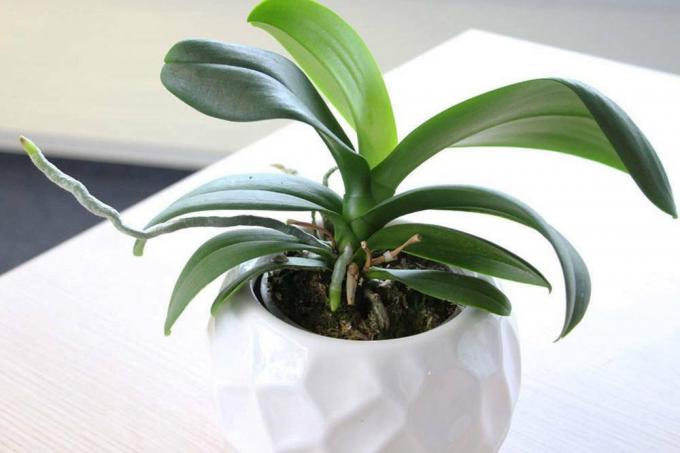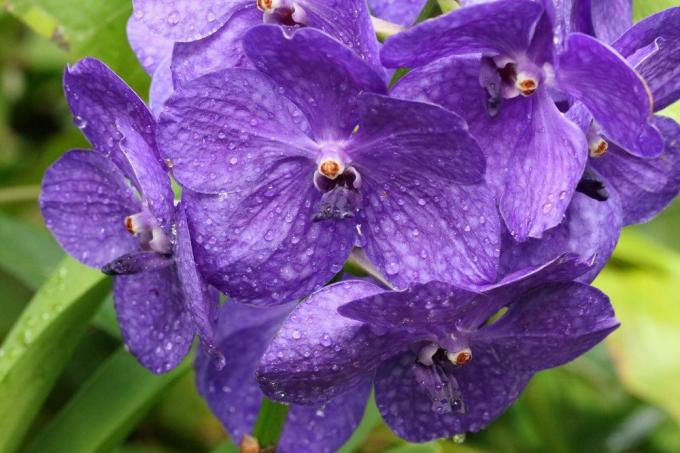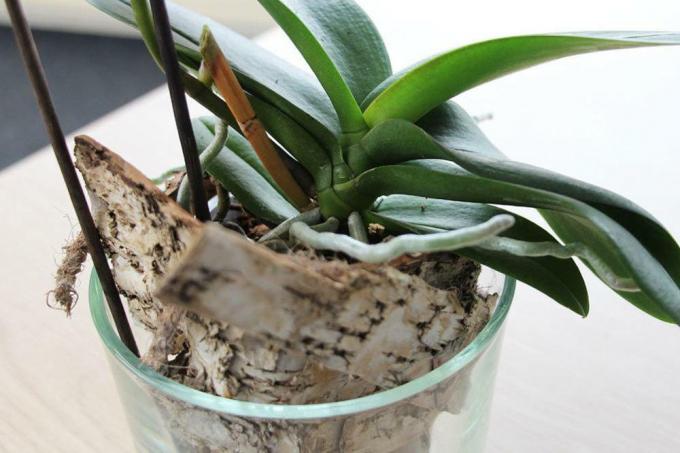
table of contents
- Planter
- Main criteria
- material
- volume
- plastic
- Pot types
- baskets
- Hanging pots
- Orchid pots
The orchid comes from a habitat that is unusual for Central Europe. In order to allow it to thrive just as magnificently in local regions, it also places high demands on its plant pot. You can find out what this should look like and what conditions it should meet with the plant expert.
Planter
Not every planter is suitable for optimal orchid keeping. The rainforest flower with the botanical name Orchidaceae has so-called aerial roots, which need light so that photosynthesis can take place. Therefore, these plants are ideally planted in a transparent culture pot. However, these leave the aerial roots freely visible, which disturbs the noble overall look of this graceful plant. Nowadays, the solution is offered by special planters that meet the high demands of orchids and harmonize perfectly with the aesthetics of the plants.
Main criteria
By nature, orchids are used to warm and humid micro-climates and so thrive best. For this reason, a planter should be made in such a way that it can create this climate. This is achieved through a water reservoir from which moisture rises continuously. This should not only keep the soil moist, but also be able to rise to the leaves and flowers. This requires a correspondingly large distance between the cultivation pot and the planter. Due to the incidence of light, the orchid planter must be sufficiently large. The challenge to achieve the necessary moisture is to avoid waterlogging. This distinguishes the Orchidaceae planter from conventional ones.

Overview of pot properties:
- Planter size at least twice as large as the transparent culture pot
- enough space for excess water
- The cachepot must not have a hole in the bottom or it must be provided with a saucer
- sufficient distance between the culture pot and the water reservoir
Exception, there are two types of orchids that do not require a special planter:
- Orchidaceae Phalaenopsis
- Moth orchid
The Orchidaceae Phalaenopsis is one of the most popular and most widespread orchids in Central Europe. They and the moth species have fewer demands on the soil climate and thrive in a conventional planter just as well as all other varieties with a humid and warm micro-climate. However, the prerequisite is that a high-quality, airy substrate is used.

material
Orchid pots are available in different materials, most of which also have different properties. In addition, the material usually mainly determines the overall look and thus leaves orchid lovers sufficient space for personal taste or adaptation to the furnishing / decoration style of the At home.
volume
Clay pots
Contrary to some opinion, a pot made of clay is very suitable for orchids. The porous structure helps regulate the water balance, also stores excess water and releases it again through evaporation. This is particularly beneficial for rising damp in the direction of leaves and flowers.

plastic
Plastic pots
Plastic pots, which are preferred for window sills, are widespread. They usually have holes in the bottom and stand on a saucer to catch the excess water. The advantage of plastic pots is that, if necessary, additional bottom holes can be easily drilled into the material without damaging the pot. In addition, a plastic pot makes it easier to remove plants when repotting thanks to the flexibly movable side walls.
For newcomers to orchid keeping, we recommend a transparent plastic planter that allows you to look inside. In this way, diseases, too much water or pests can be identified much more easily and quickly.
Pot types
In addition to conventional round, square and polygonal planters, other types of pots are more advantageous for some genera from the orchid family.

baskets
Tall genera, such as the Dendrobium or Cattleya, are usually sensitive to moisture at the roots. Here it is important that the roots can dry off well after watering. The best way to do this is to use a plant basket such as that used for pond plants. It is made of plastic and has rods or braids that are further apart. In this, more air gets inside and the soil moisture in the root area can penetrate better to the outside.
Hanging pots
In an Orchidaceae with a drooping habit, such as the Coryanthes, Stanhopea and Brassia have, is a So-called traffic light pot or a special hanging basket is recommended so that the orchid plants can move freely downwards can develop. Of course, these types of pots should meet the necessary conditions in order to be able to simulate the required warm and humid tropical climate.

Orchid pots
Orchitop
An orchitop is a cachepot specially developed for orchids, which does not have completely closed walls, but consists of rows of bars. The distances and bar thicknesses are chosen so that sufficient light and air can get into the inside of the pot from the outside. Nevertheless, the rods are so close together that the aerial roots cannot be seen from the outside. The special construction prevents the orchid soil from falling out of the pot. The Orchitop is made of transparent, milky plastic in ten different colors.
Excess water is collected by a coaster filled with expanded clay. In this way waterlogging is avoided, but a humid micro-climate is created, as the Orchidaceae are used to from rainforest zones. The Orchitop is also available in a box shape for several plants that can be placed next to each other. Round versions with a diameter of 13 centimeters cost around 10 to 14 euros.
Ceramic special planter
Another version for an ideal orchid pot is offered by a special ceramic planter, such as that offered by hand made from Upper Lusatian clay. The functional principle is similar to an Orchitop, so that a simulation of a warm and humid micro-climate is guaranteed here as well.

Instead of rods lined up next to each other, the special ceramic planter has holes in the walls through which air and light can penetrate, but the roots inside remain invisible. As a handcrafted product and ideal functionality in high quality, it is priced in the higher segment. For this version, a purchase price of around 70 euros for a 15.5 centimeter diameter including a matching saucer can be expected.
Cheap ceramic orchid pots
The round ceramic pots, which are specially tailored to orchid requirements, can hardly be distinguished from a conventional flower planter. The principle of operation is simple. In the middle of the cachepot there is an approximately 40 millimeter high platform on which the culture pot stands. Excess water flows down the pedestal sides into the closed soil area, where it is at a sufficiently large distance from the roots.
This type of pot is one of the classics and, with a price of usually less than four euros for a 14 centimeter diameter pot, one of the cheapest offers.
Dehner ceramic orchid pot
The Dehner company offers a variety of orchid pots, mainly made of ceramic. A highlight is the model in stone form, which radiates extravagance and brings a little more natural look into the rooms. Functionally, the advantage is shown here that more water is collected and raised due to the longer floor area In this way, a humid tropical climate can be created for a longer period of time than is the case with conventional pot shapes. This special ceramic version is priced at around 35 euros for a “stone pot” 38 centimeters long and 12 centimeters high.
Glass planter
Marbled glass cachepots in a wide variety of colors, such as those offered by LOTEX, for example, are a visual highlight. These have an integrated spacer for the distance between the cultivation pot and the planter, so that sufficient moisture can escape upwards. Daylight penetrates through the glass and the view of the roots inside the pot does not seem disharmonious due to the marble design. The prices tend to be in the lower price segment.

Orchid vase
The noble orchid plant looks very modern in a vase, as it was developed and patented by the Swiss company Schubinger, for example. This is a so-called climate vase, which meets the same requirements as an orchid pot. However, the new technology no longer requires a substrate, which has the advantage of avoiding rot, which often occurs when the soil is too wet. The nutritional requirements are covered by adding charcoal. The functional principle is based purely on water and its evaporation. The climate vase for the orchid is available with a diameter of 16 centimeters from just 28 euros.
